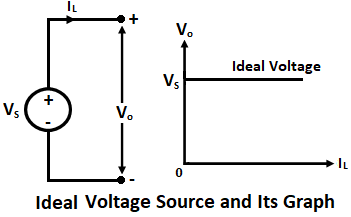Table of Contents
Ideal Voltage Source
An ideal voltage source is a fundamental concept in electrical engineering and in network theory. It provides a perfect, unchanging voltage to any connected circuit, unaffected by any external factors or load variations.

Characteristics of an Ideal Voltage Source
- Constant Voltage: An ideal voltage source maintains a constant voltage across its terminals regardless of the current drawn by the load. This means that the voltage remains the same even if the load changes.
- Zero Internal Resistance: An ideal voltage source has zero internal resistance, meaning there are no voltage drops within the source itself. All the supplied voltage appears across the external load.
- Infinite Current Supply: In theory, an ideal voltage source can supply infinite current to the load without any loss in voltage. However, this is not practical in real-world scenarios.
Representation
In circuit diagrams, an ideal voltage source is represented by a circle with a plus (+) and minus (-) sign indicating the polarity of the voltage.
Mathematical Representation
For an ideal voltage source with voltage \( V_s \):
\[ V_{\text{out}} = V_s \]
Where:
- \( V_{\text{out}} \) is the voltage across the load.
- \( V_s \) is the source voltage.
Practical Implications
- Non-ideal Sources: In reality, all voltage sources have some internal resistance and cannot supply infinite current. These are known as non-ideal or practical voltage sources.
- Load Variation: The ability to maintain a constant voltage under varying load conditions is a key feature, making ideal voltage sources a useful theoretical model for understanding and designing electrical circuits.
Example
Consider a simple circuit with an ideal voltage source and a resistor as the load:
Ideal Voltage Source → \( R_{\text{load}} \)
If the voltage source is 10V and the resistor is 5 ohms, the current \( I \) through the resistor can be calculated using Ohm’s Law:
\[ I = \frac{V}{R} = \frac{10V}{5\Omega} = 2A \]
The voltage across the resistor remains 10V regardless of the current, illustrating the concept of an ideal voltage source.
Real-World Application
In practice, ideal voltage sources are approximated using regulated power supplies, batteries, and other devices designed to minimize internal resistance and maintain a steady voltage under various conditions.
Understanding the ideal voltage source is crucial for analyzing and designing electrical circuits, as it provides a simplified model to predict circuit behavior under ideal conditions.